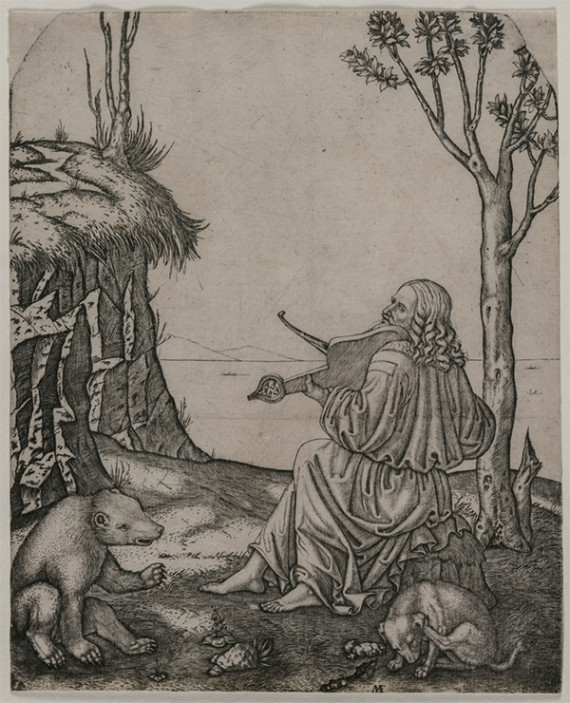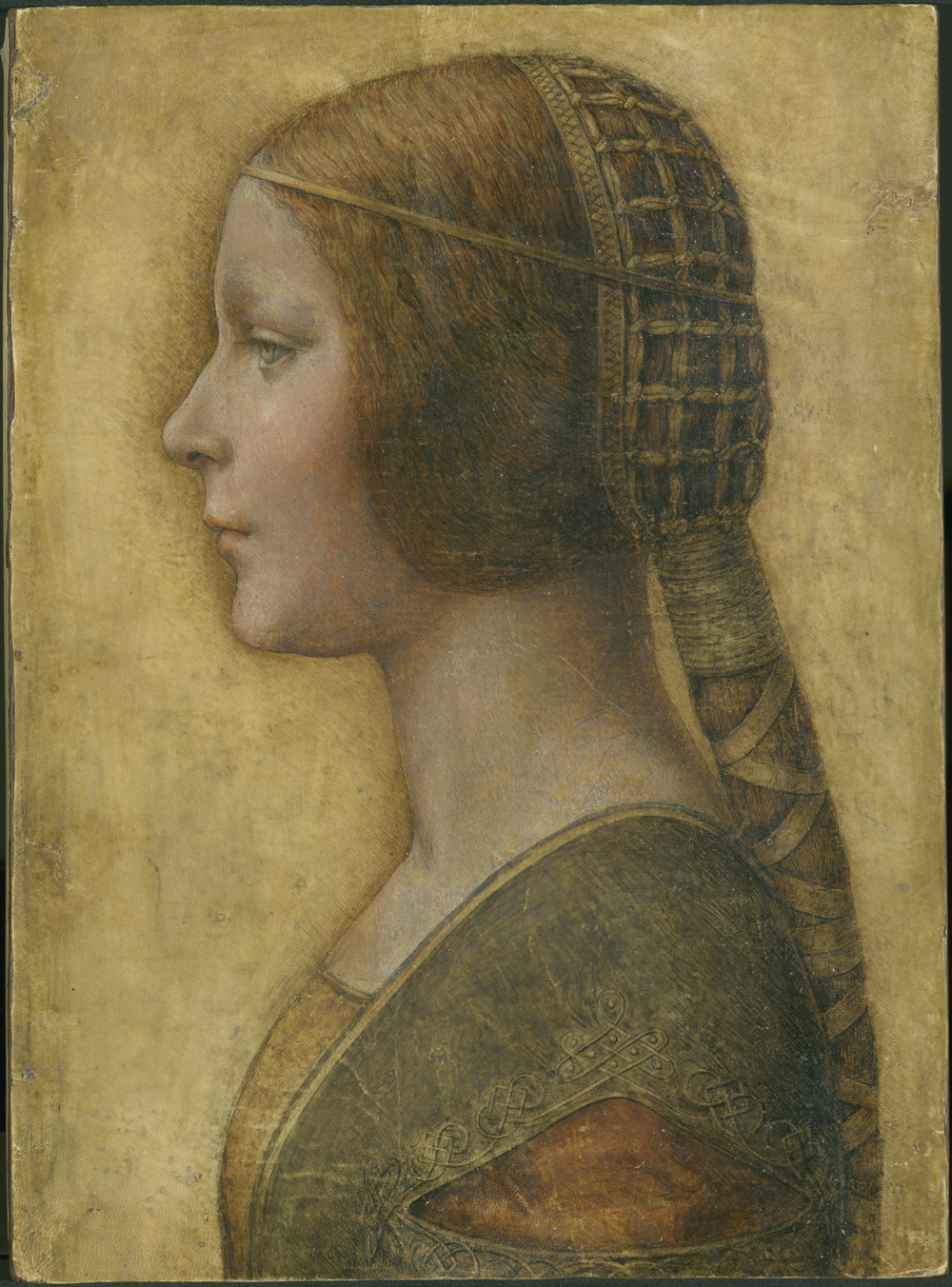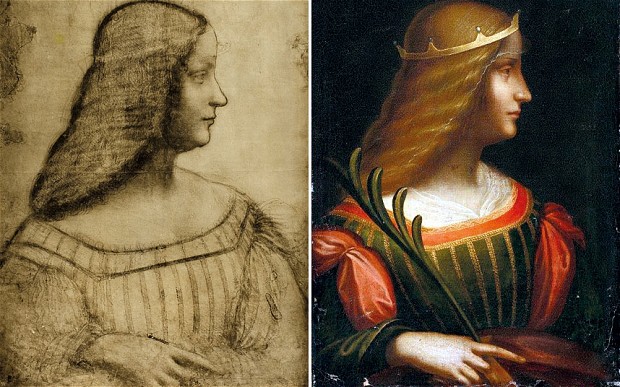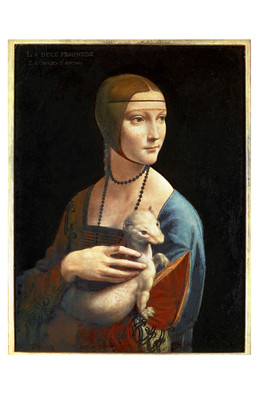
Laura's Blog

The 6 Most Exciting Recent Discoveries about Leonardo da Vinci
April 13, 2016
Given his wide range of talents, fascinating projects, and his fairly undocumented life, many scholars, artists, and historians have continued to dig into the unanswered questions about Leonardo da Vinci. In the past decade, there have been numerous thrilling discoveries regarding his life and works—which create a richer and more intriguing portrait of a brilliant man.
1. Leonardo was a rock star—and there might be an engraving to prove it.

In addition to being a painter, botanist, inventor, and engineer, Da Vinci was also an acclaimed musician. He was particularly fond of a musical instrument called a lira da braccio—and even built one with his own hands. A large part of it had been made in silver, with the idea of increasing the volume of the instrument and improving the tone. Modern scholarship suggests that an engraving, originally titled “Orpheus Charming the Animals” done by Marcantonio Raimondi may in fact be a portrait of Leonardo da Vinci. During the Renaissance, Orpheus was consistently depicted as young clean-shaven youth. The man in this engraving is in late middle age, bearded, and has centrally parted hair with long curls. It also bears a striking resemblance to the other two confirmed depictions of Leonardo da Vinci during his lifetime. And, the man in the engraving is playing the lira da braccio. The theory that this engraving depicts Leonardo is still very much a theory—but the parallels are striking.
2. Leonardo was probably of Middle Eastern decent—and was potentially Muslim.
Several researchers discovered a complete fingerprint on one of Leonardo’s paintings (the artist often used his fingers to blend and mix paints). The central whorl matches a common pattern in the Middle East. This discovery gave more credence to the theory that Leonardo’s mother may have been a Turkish slave who came to Tuscany from Istanbul (suggested by documents found in Vinci, Leonardo’s birthplace.) By identifying this whorl pattern, art historians may be able to discover and identify lost Leonardo paintings, such as…
3. La Bella Principessa

This portrait was originally believed to be an early 19th-century German work, however, recent scholarship has suggested Leonardo da Vinci probably painted it. The sheet of vellum on which the portrait is drawn seems to have been cut from a Milanese book that once belonged to Francesco Sforza, Leonardo’s employer. A radiocarbon dating test further confirmed that the vellum could not have been from the early 19th-century—but instead dated back to the Renaissance. But the piece of evidence that confirmed many scholars’ suspicions that Leonardo da Vinci created La Bella Principessa was in fact, a fingerprint.
4. Leonardo may still have some living relatives!
It has long been assumed that Leonardo’s family line went extinct generations ago. However, on April 12th, 2016 (this week!), two Italian researchers announced they have found modern-day descendants of Leonardo’s father, Ser Piero Da Vinci (Leonardo was an illegitimate child). This has yet to be confirmed, but if it is true, it means that researchers might now be able to use DNA samples to confirm the authorship of several potential Leonardo da Vinci artworks.
5. Long-lost Leonardo da Vinci painting found in Swiss bank vault

In 1499, Leonardo da Vinci was commissioned to pain a portrait of the powerful and beautiful Isabella d’Este. While a sketch of her hangs in the Louvre, it was assumed the painting was never made. However, in 2013, a painting very similar to the sketch was discovered in a Swiss bank vault. It has not been officially confirmed as a Leonardo da Vinci, but scientific testing suggests that the oil portrait is indeed his work. These tests have shown that the type of pigment in the portrait was the same as that used by Leonardo and that the primer used to treat the canvas on which it was painted corresponds to the primer he often used. However, it is also possible the painting was finished by one of Leonardo’s pupils—further testing needs to be done.
6. Leonardo painted 3 different versions of Lady with an Ermine.

Two years ago, using reflective light technology, it was revealed that Da Vinci’s famous portrait, Lady with an Ermine, did not always include the Ermine. Leonardo seems to have added it years later. And although reasons explaining this addition vary widely, one thing is certain—it shows how Leonardo was constantly fiddling with and revising his paintings. Perhaps this is an explanation for how rarely he finished his projects!
If one thing's for sure....I think Leonardo da Vinci--the scientist-artist renaissance man--would have been delighted by the necessary combination of scientific research and artistic scholarship that went into all of these discoveries about his life and his work!

Other Blog Posts
Click Here to See All of Laura's Blog Posts
